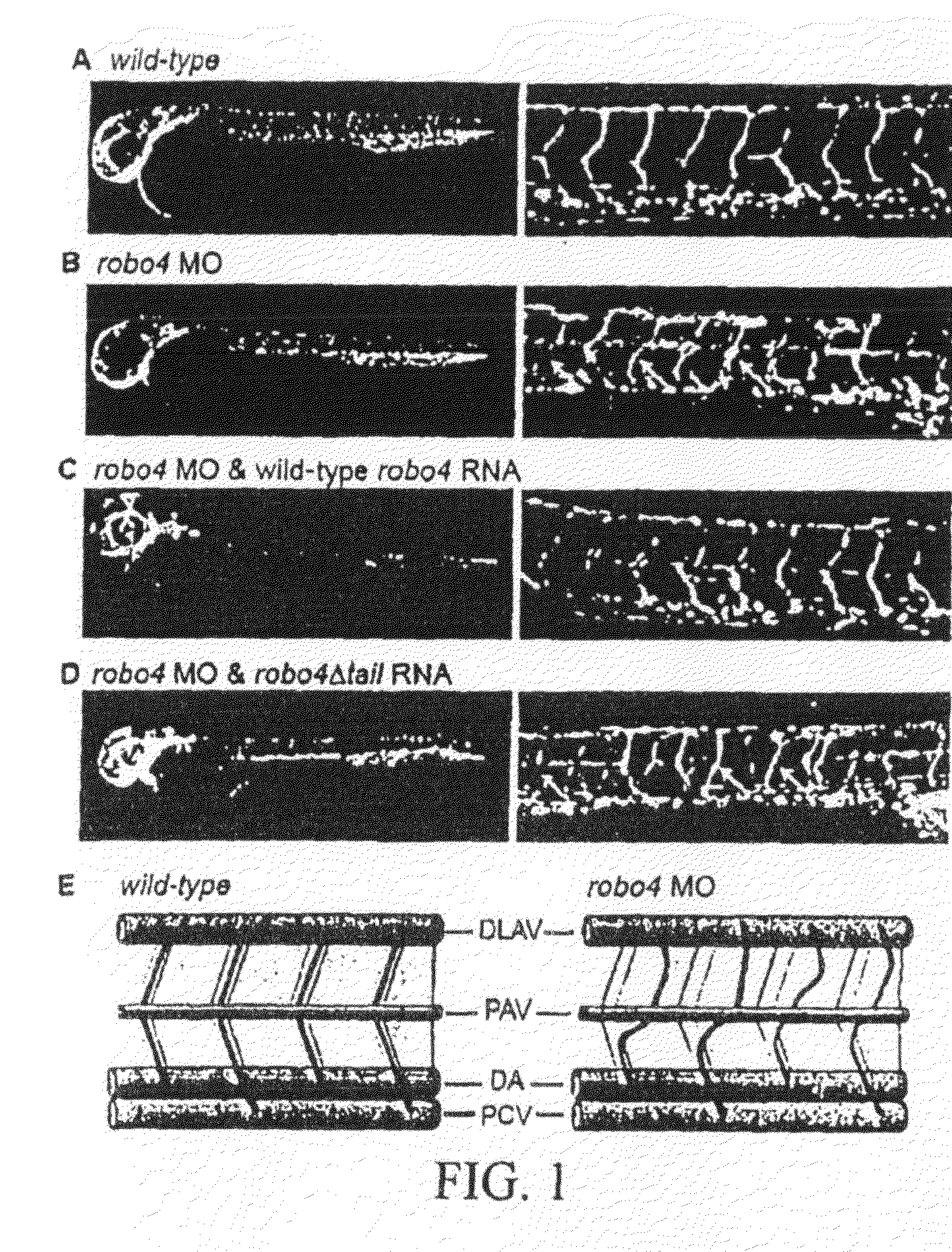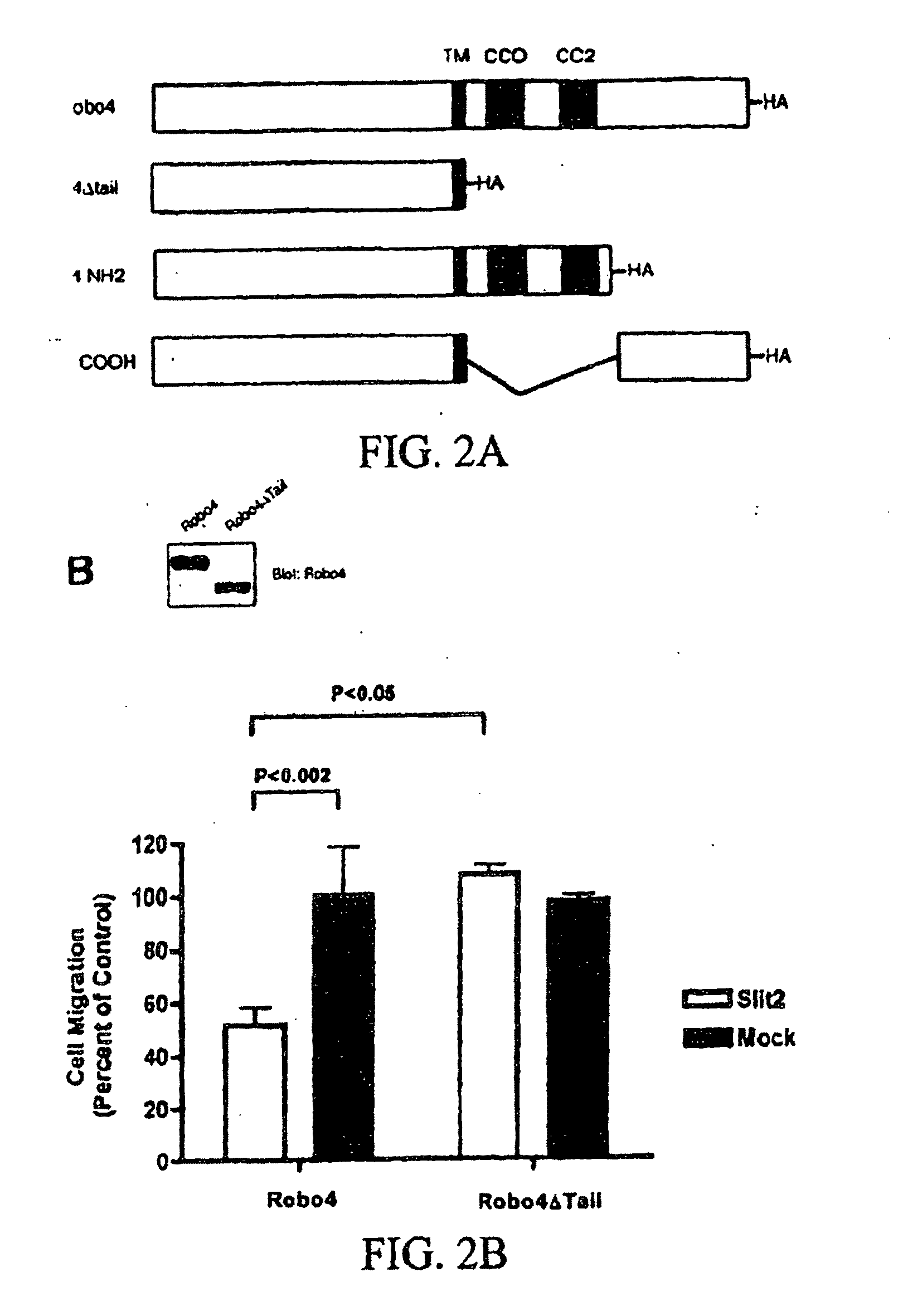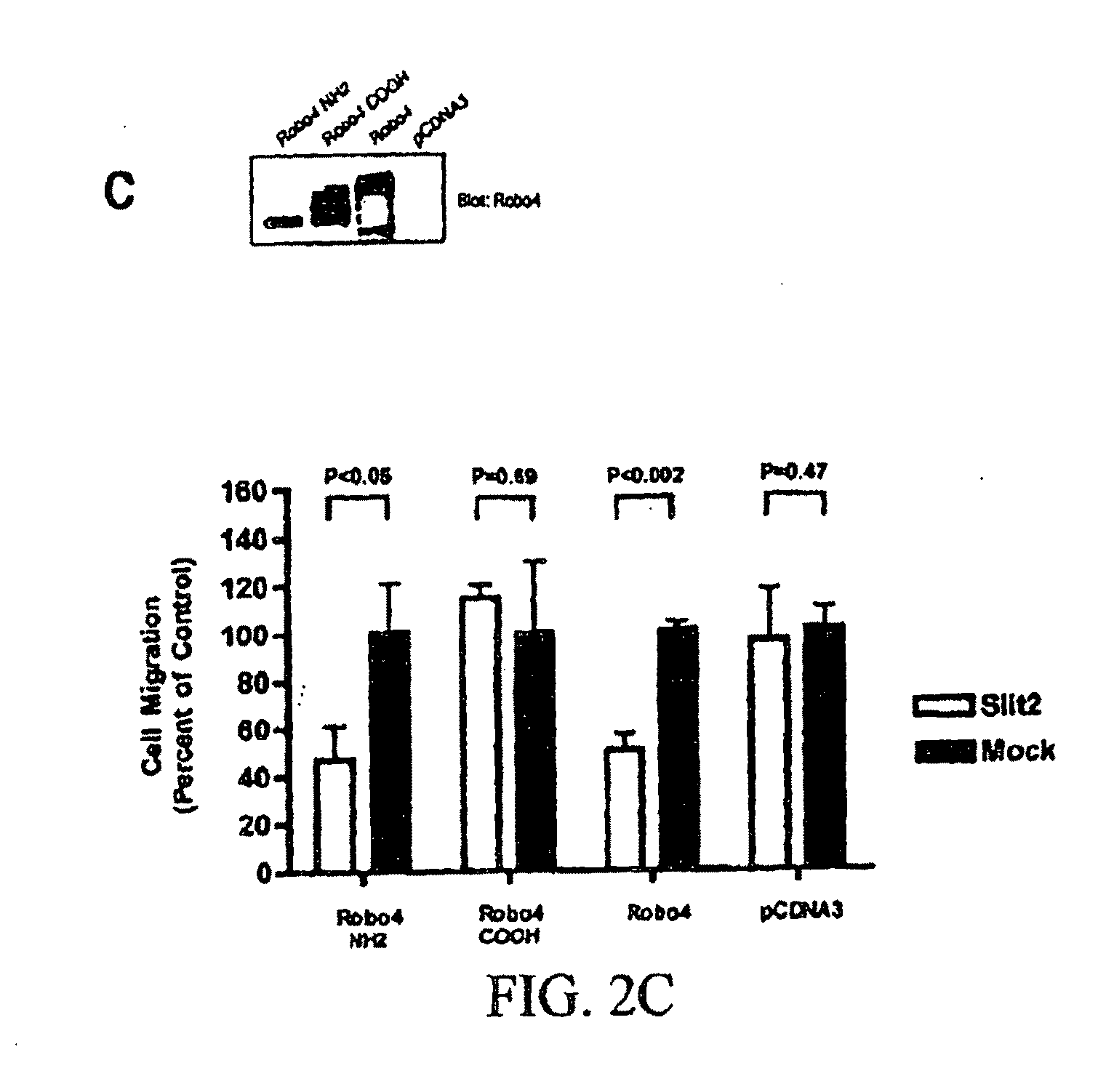Compositions and methods for treating pathologic angiogenesis and vascular permeability
a technology of pathologic angiogenesis and vascular permeability, applied in the direction of drug compositions, immunological disorders, metabolism disorders, etc., can solve the problems of dysfunctional blood vessels, hemorrhage, cataracts, etc., to inhibit pathologic angiogenesis, inhibit vascular permeability, and inhibit vascular permeability
- Summary
- Abstract
- Description
- Claims
- Application Information
AI Technical Summary
Benefits of technology
Problems solved by technology
Method used
Image
Examples
example 1
[0184]Robo4 is Required for Vascular Guidance in vivo: During the past decade, the zebrafish has become an attractive model for analysis of vascular development (Weinstein, 2002), and was chosen to investigate the biological importance of Robo4 in vivo. To suppress Robo4 gene expression, a previously described splice-blocking morpholino that targets the exon10-intron10 boundary of Robo4 pre-mRNA (Bedell et al., 2005) was used. To verify the efficacy of the Robo4 morpholino, RNA was isolated from un-injected and morpholino-injected embryos, and analyzed by RT-PCR with primers flanking the targeted exon (FIG. 8A). Injection of the Robo4 morpholino resulted in complete loss of wild-type RNA when compared to the un-injected control, indicating that morphant zebrafish are functionally null for Robo4 (FIG. 8B).
[0185]TG(fli1:egfp)yl zebrafish embryos, which express green fluorescent protein under the control of the endothelial specific fli1 promoter, and permit detailed visualization of th...
example 2
[0186]The Robo4 Cytoplasmic Tail is required for Vascular Guidance in vivo: It was next determined whether the vascular defects observed in Robo4 morphants could be suppressed by reconstitution of robo4. robo4 MO and wildtype murine Robo4 RNA, which is refractory to the morpholino, were injected into TG(fli1:egfp)yl embryos and vascular patterning was analyzed at 48. hpf. Robo4 RNA restored the stereotypic patterning of the trunk vessels in approximately 60% of morphant embryos, confirming the specificity of gene knockdown (FIGS. 1B and C, right panels).
[0187]The ability of the robo4 to regulate vascular development is likely a consequence of its ability to transmit cytoplasmic signals. To substantiate this notion, Robo4 MO and a mutant form of murine Robo4 lacking the portion of the receptor that interacts with cytoplasmic components (robo4Δtail) was co-injected and vessel architecture evaluated at 48 hpf. Unlike wild-type Robo4 RNA, robo4Δtail was unable to rescue patterning defec...
example 3
[0188]The Robo4 Cytoplasmic Tail is required for Inhibition of Haptotaxis: Slit2-Robo4 signaling inhibits migration of primary endothelial cells towards a gradient of VEGF, and of HEK 293 cells ectopically expressing Robo4 towards serum (Park et al., 2003; Seth et al., 2005). In addition to soluble growth factors, immobilized extracellular matrix proteins such as fibronectin play a critical role in cellular motility (Ridley et al., 2003), and gradients of fibronectin can direct migration in a process called haptotaxis. Indeed it has been shown that fibronectin is deposited adjacent to migrating endothelial cells in the early zebrafish embryo (Jin et al., 2005). The observation that Robo4 is required for proper endothelial cell migration in vivo (FIG. 1), indicated the ability of Slit2-Robo4 signaling to modulate fibronectin-induced haptotaxis. HEK 293 cells were transfected with Robo4 or Robo4ΔTail (FIG. 2A) and subjected to haptotaxis migration assays on membranes coated with a mix...
PUM
| Property | Measurement | Unit |
|---|---|---|
| molecular weight | aaaaa | aaaaa |
| molecular weight | aaaaa | aaaaa |
| molecular weight | aaaaa | aaaaa |
Abstract
Description
Claims
Application Information
 Login to View More
Login to View More - R&D
- Intellectual Property
- Life Sciences
- Materials
- Tech Scout
- Unparalleled Data Quality
- Higher Quality Content
- 60% Fewer Hallucinations
Browse by: Latest US Patents, China's latest patents, Technical Efficacy Thesaurus, Application Domain, Technology Topic, Popular Technical Reports.
© 2025 PatSnap. All rights reserved.Legal|Privacy policy|Modern Slavery Act Transparency Statement|Sitemap|About US| Contact US: help@patsnap.com



